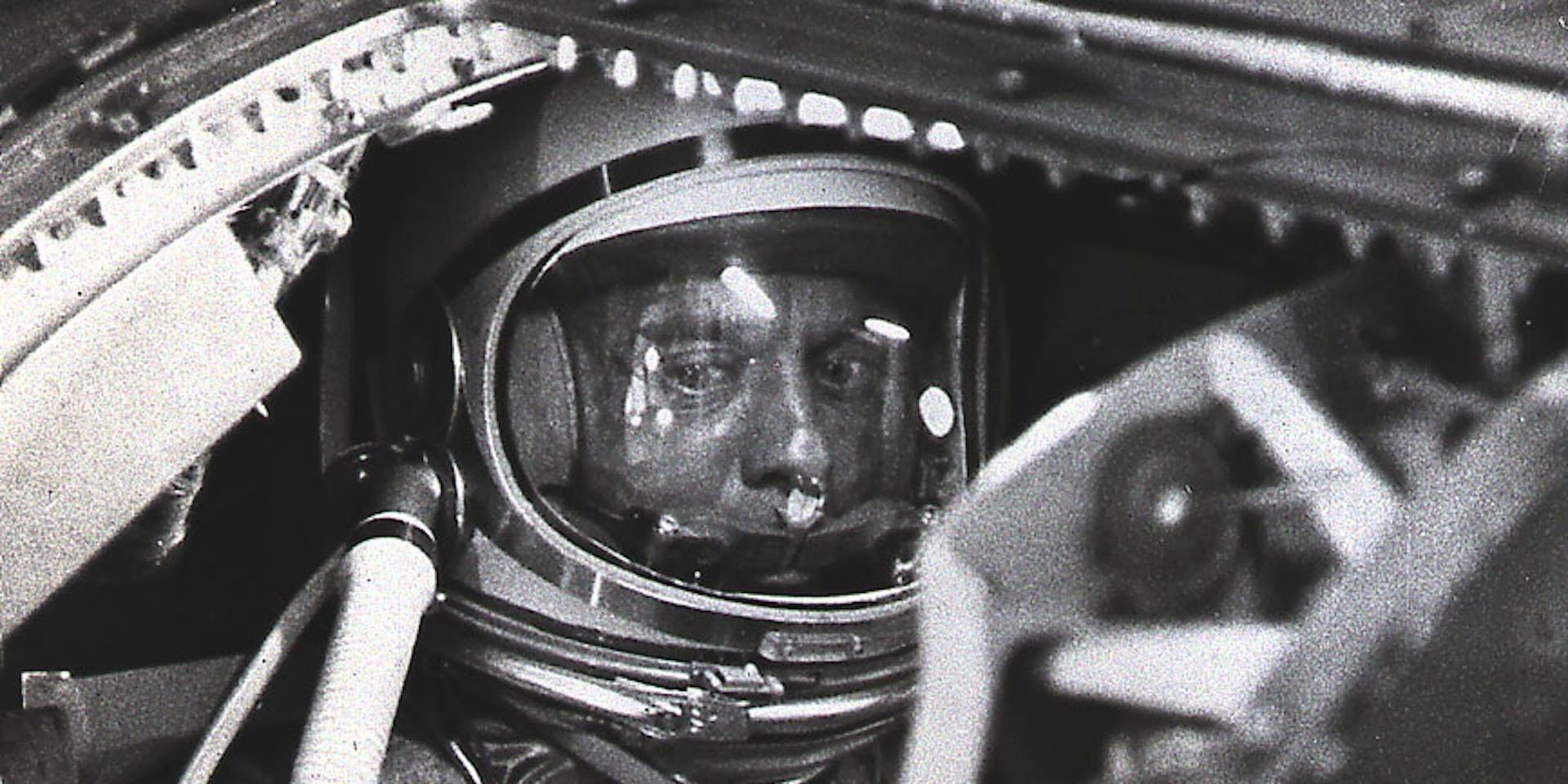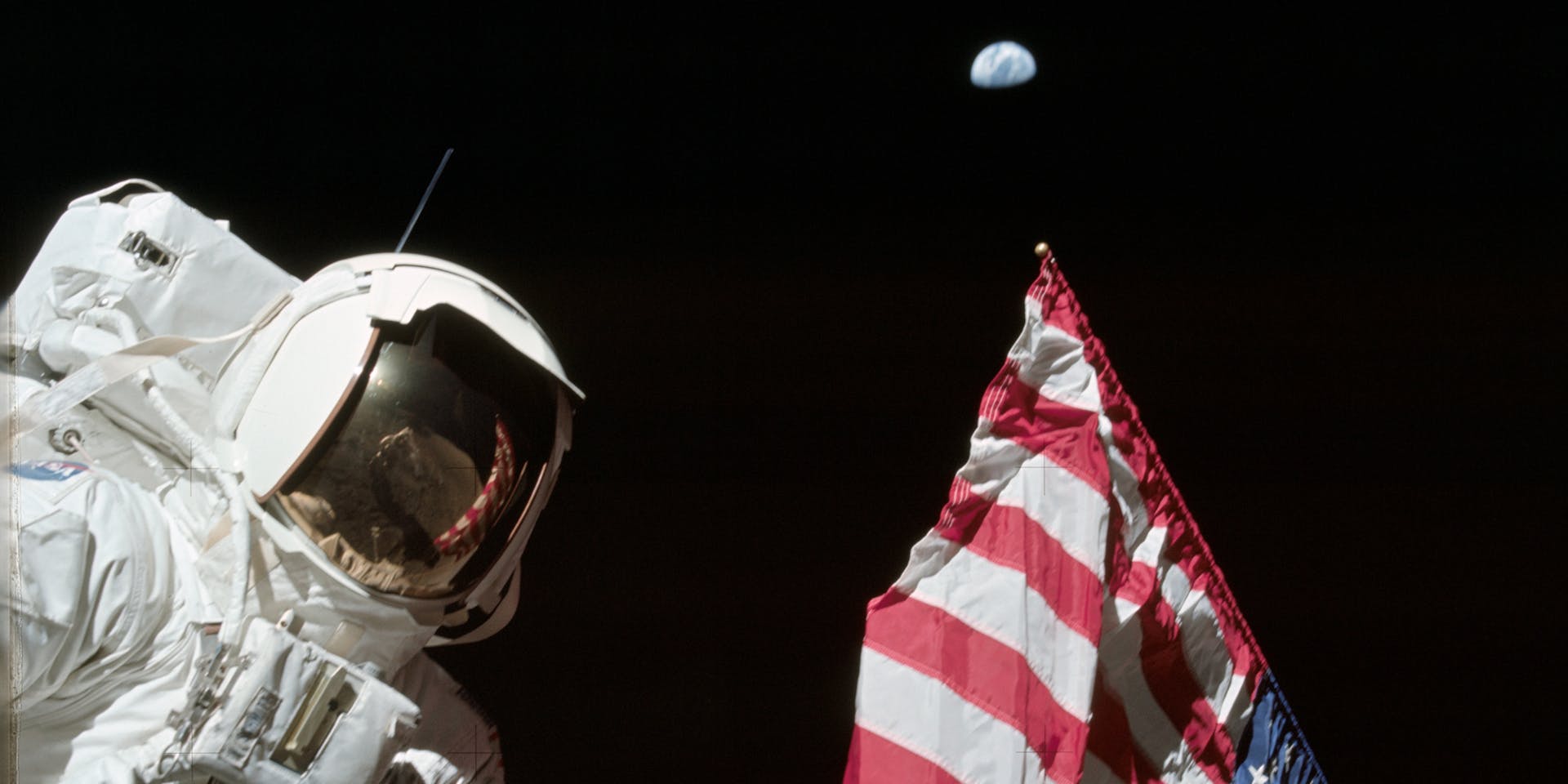10 amazing little-known facts about the moon

Golf balls, Christopher Columbus, an atomic bomb…there are so many amazing stories and facts about the Moon, far beyond the technical details of its radius or axis of rotation. Here's a look at some of the most surprising ones!
It smells like gunpowder
Harrison Schmitt, the last man to set foot on the Moon during the Apollo 17 mission, compared the scent of regolith—the dust that covers the Earth’s satellite—to the smell of gunpowder. The fine particles had a way of penetrating everything, including the astronauts' bronchial passageways, and Schmitt famously declared at the time that he had "lunar hay fever."
It can hold billions of gallons of water
While the Moon was first thought to be completely arid, studies conducted on the minerals collected during China's Chang'e 5 mission in 2020 and the American Apollo missions revealed the presence of water. A study conducted by Nature Geoscience concluded that more than 200 billion liters (50 billion gallons) of water could be stored on the Moon in the form of tiny beads of glass created after collisions with asteroids.
It saved Christopher Columbus
In 1504, Christopher Columbus accurately predicted an impending lunar eclipse using astronomical tables over several months while stranded with his crew on the coast of Jamaica. The explorer used the phenomenon to frighten the Arawak Indians living there, claiming that their god was angry because they had cut off the mariners’ food supply after an initial period of peacful cohabitation. The natives soon returned, laden with provisions!
It was the target of a planned nuclear bombing
In the late 1950s, when the United States fell behind the Soviet Union in the space race, it
responded by secretly planning "Project A119," a plan to detonate a nuclear bomb on the Moon. Eminent scientists participated in this very serious US Air Force study, which was eventually shelved due to the risks to humanity.
It once appeared to be 10-times larger
At the time of its birth some 4.5 billion years ago, the Moon was at least 10-times closer to the Earth than it is today (at a distance of 20,000 to 30,000 km compared with 384,000 km), and appeared at least 10-times larger to the naked eye. Every year, the Moon moves away from the Earth at a rate of 3.78 cm (1.49 in) per year.

The Moon is riddled with impact craters...
While 190 impact craters have been identified on Earth, there are millions on the Moon, including 5,000 craters over 20-km (12 mi) long! This is due to the fact that unlike the Blue Planet the Moon has no atmosphere and is therefore unprotected from meteorites and space dust.
... but doesn't budge an inch
The lunar surface retains the traces of the impacts because it is dormant, without wind or life, and with far fewer geological phenomena such as volcanism or erosion. The only events that can cause movement on the Moon are collisions with meteorites, however small. But this evolution is very slow; researchers estimate that lunar soil remains unaltered for millions of years.
It has been used as a golf course
In February 1971, Alan Shepard landed on the Moon as part of the Apollo 14 mission. To
everyone’s surprise, he pulled out a golf club that he had discreetly cobbled together by grafting the head of a number 6 iron onto the telescoping shaft of a soil-sampling tool. Shepard hit two balls, the first of which landed just 20 yards away, while the second was catapulted 200 yards. They are still there, thanks to the Moon’s “vacuum” environment.
Plants may be able to grow on its soil
In 2022, scientists at the University of Florida succeeded in growing a plant (lady's mint, from the watercress family) on lunar soil. Not directly, however: the operation was performed on Earth by placing seeds in the cavities of small rock samples brought back from the Apollo
missions. This proved that the lunar selenite soil was similar in composition to that of our planet and opened up the prospect of astronauts one day growing their own vegetables there!
It exerts equal gravity to all bodies
Because the Moon is smaller and has much less mass than the Earth, its gravity is six times weaker. This does not prevent the Moon from exerting the same gravitational force on other bodies as it does on our planet. This property is all the more apparent on the Moon because objects are not subject to air resistance. Astronaut David Scott gave a convincing demonstration of this in 1971, during the Apollo 15 mission to the Moon, when he simultaneously released a 1.32 kg hammer and a 0.03 kg hawk feather, both of which hit the ground at exactly the same moment.